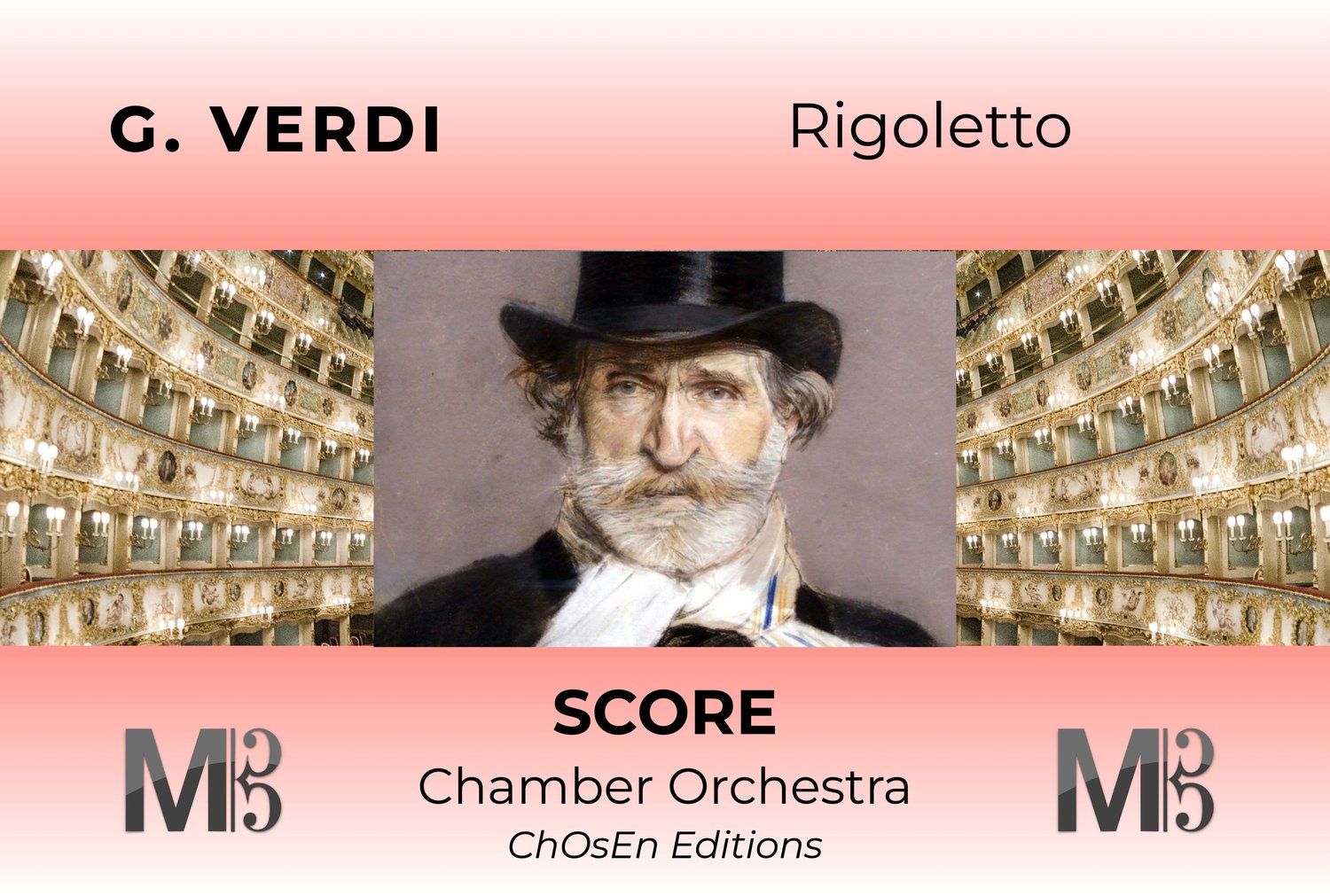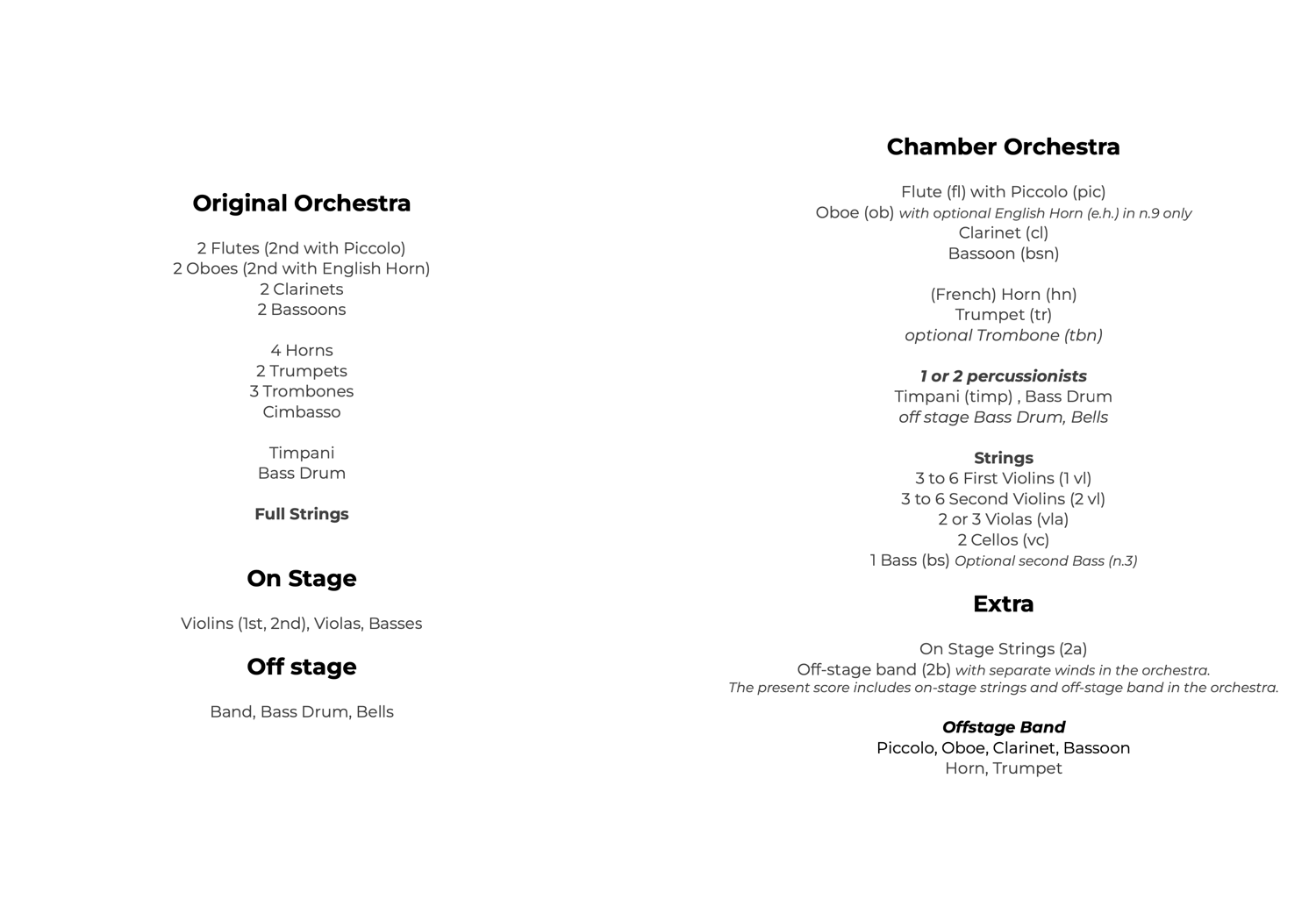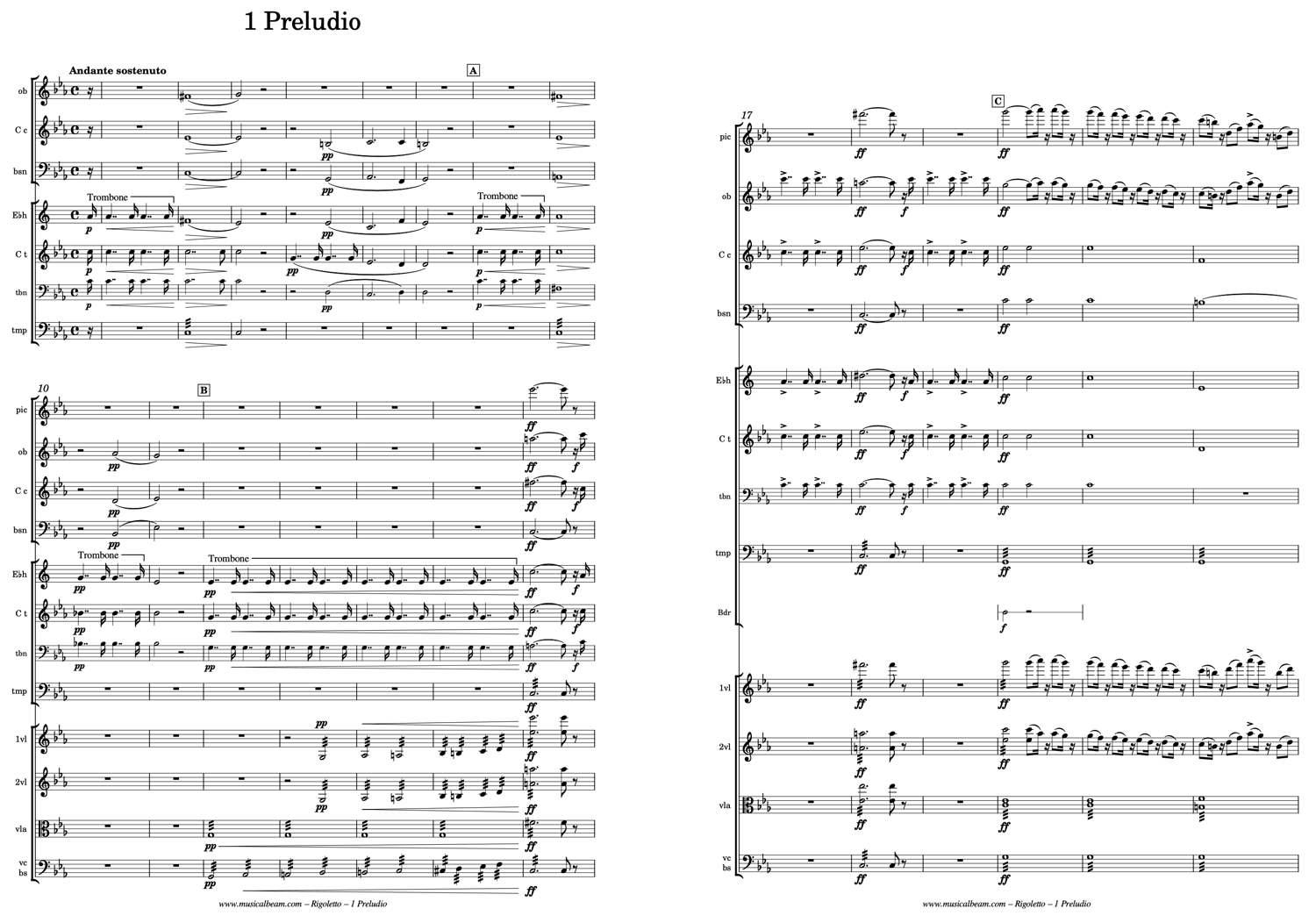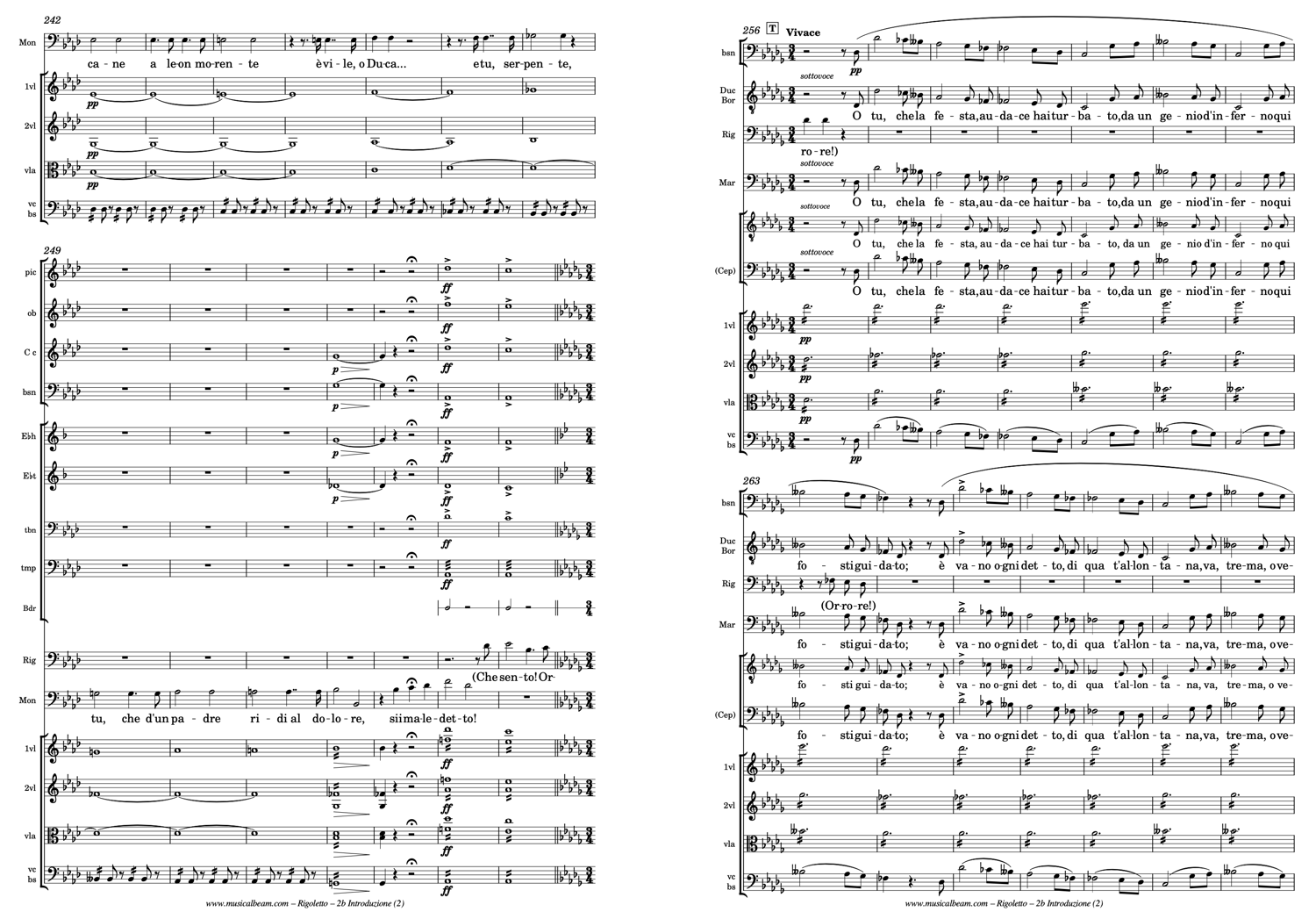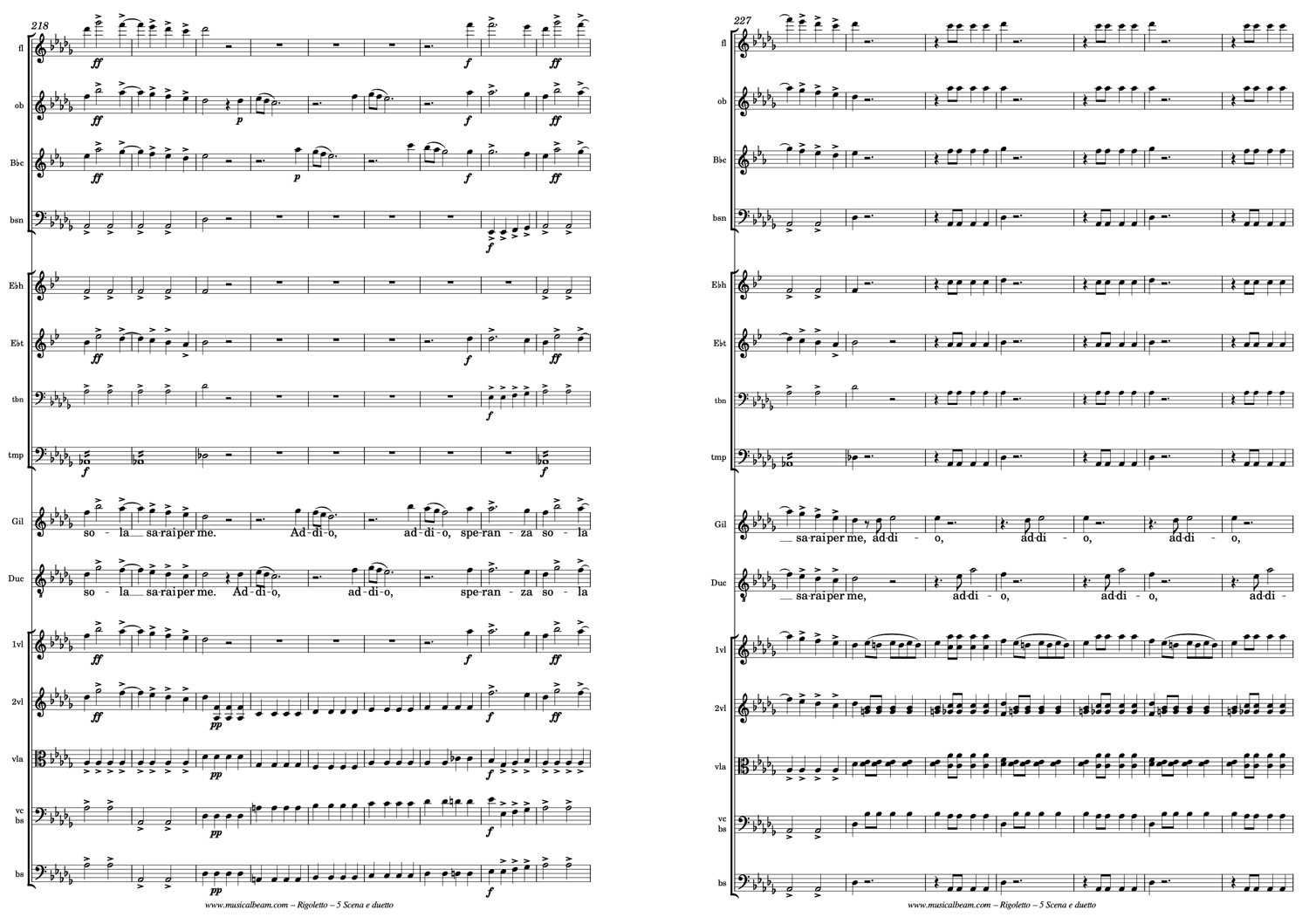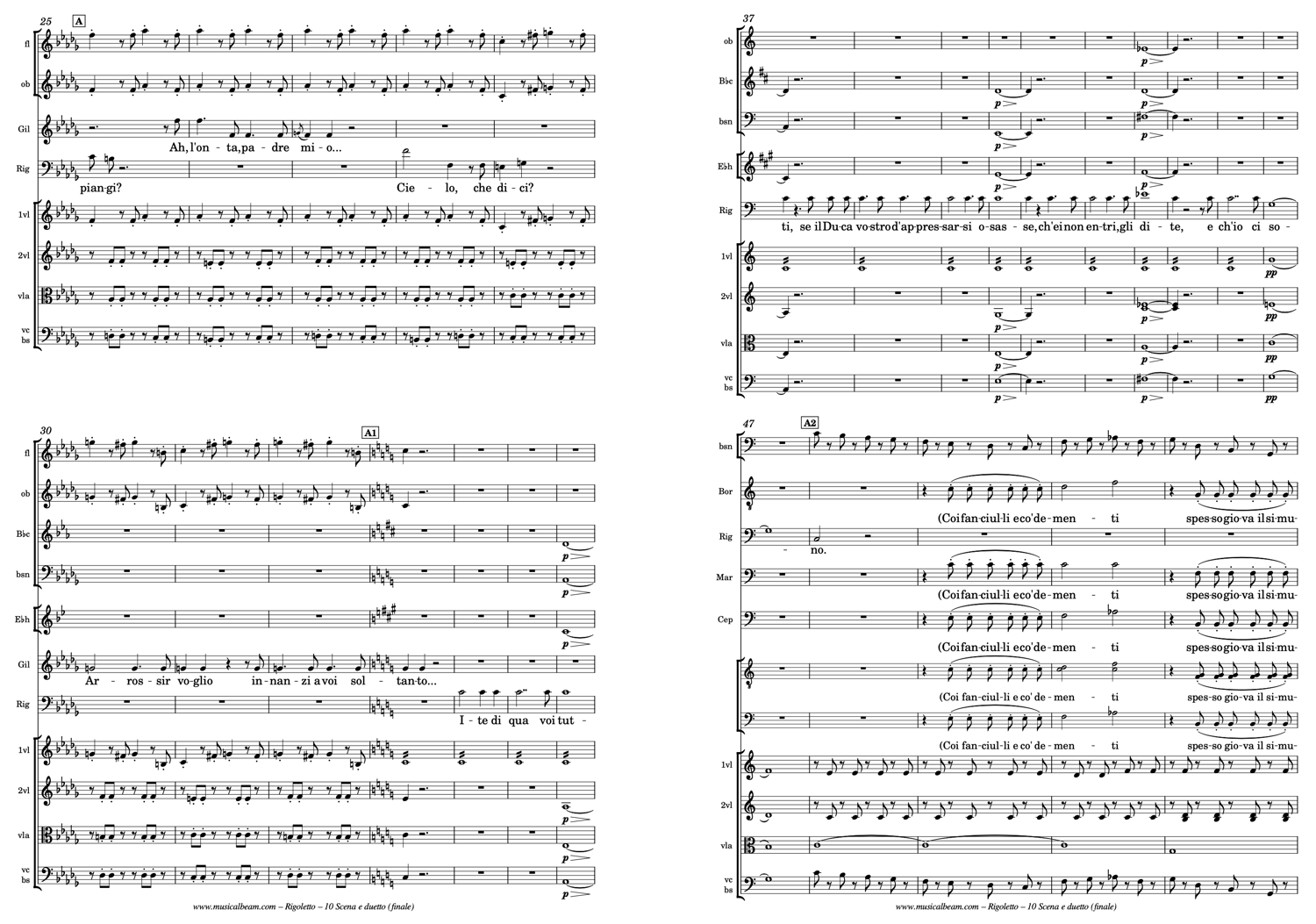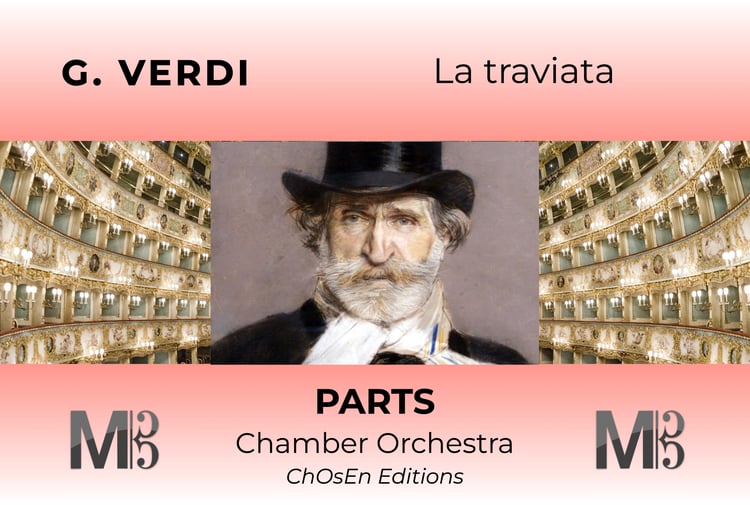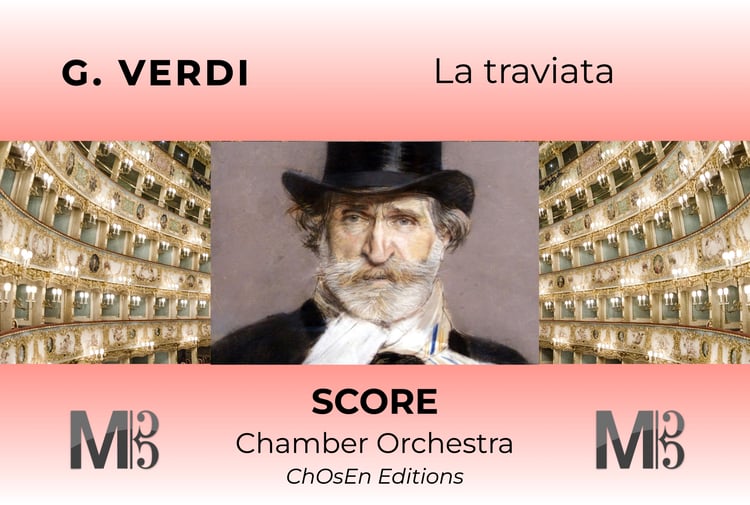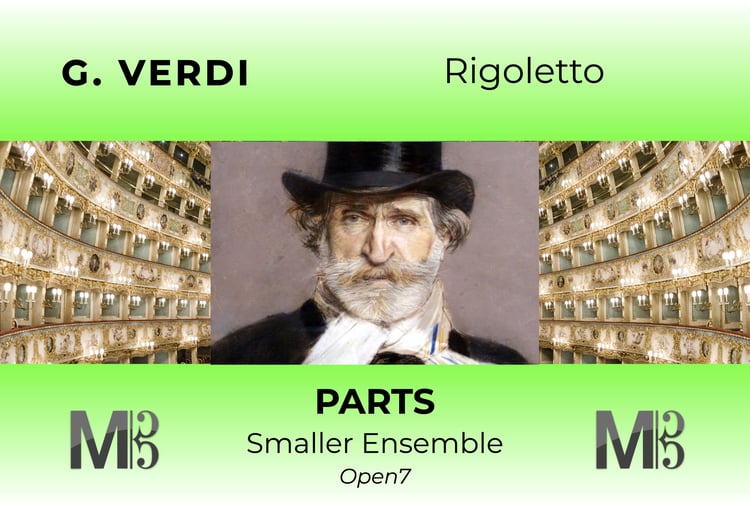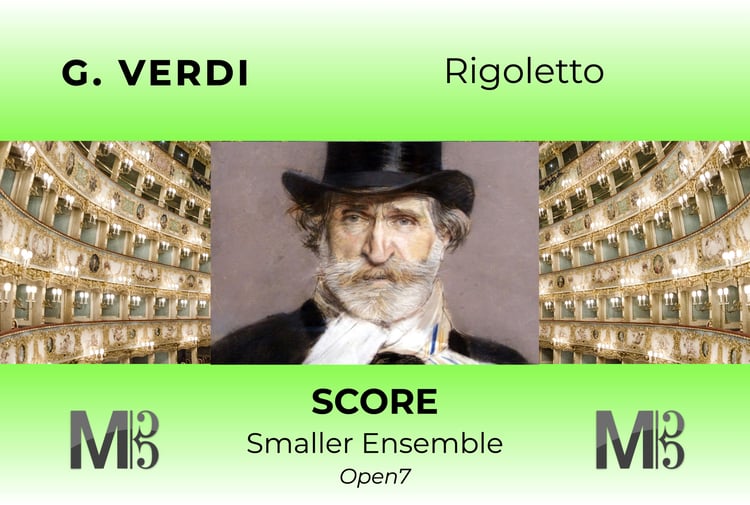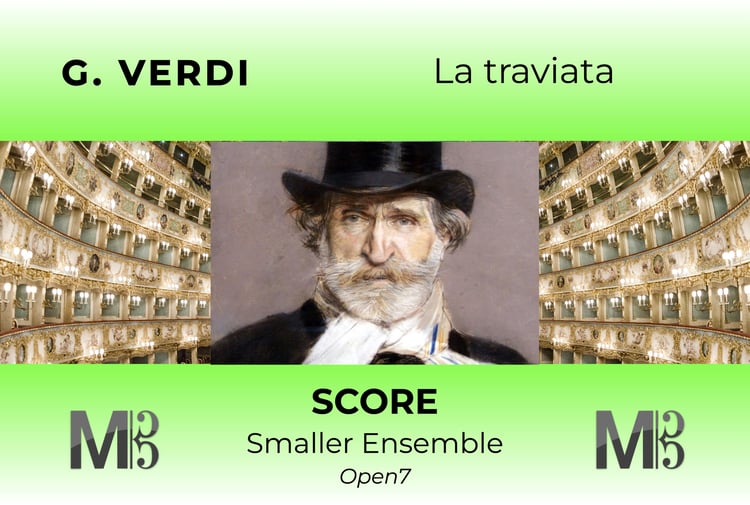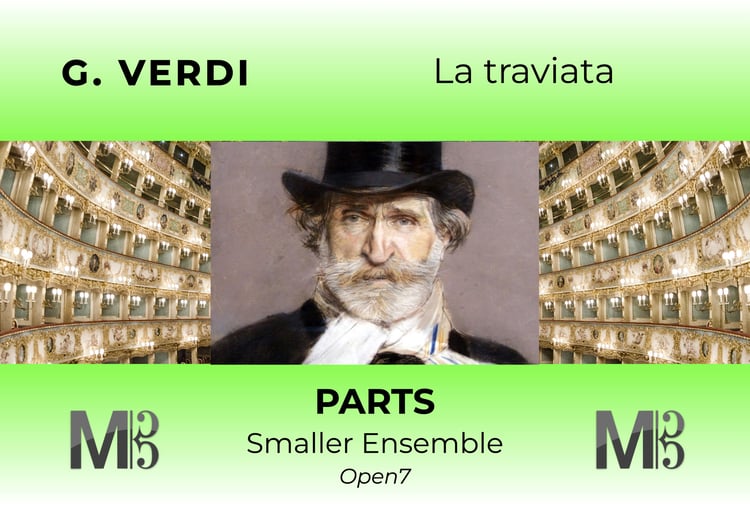Rigoletto for Chamber Orchestra (Score)
Rigoletto, a cornerstone of Verdi’s middle period, premiered at La Fenice in Venice on March 11, 1851. Based on Victor Hugo’s controversial play Le Roi s’amuse, the opera unfolds around a hunchbacked court jester, his innocent daughter, and a libertine duke. Verdi sculpted a darkly emotional drama of power, vengeance, and doomed love. Its musical innovations—such as the powerful quartet "Bella figlia dell’amore"—redefined Italian opera. Verdi’s exploration of inner psychology and moral ambiguity in Rigoletto marked a turning point in his career and in 19th-century opera.
Rigoletto for Chamber Orchestra (18-28 players)
Rigoletto is scored for a classical mid-19th century orchestra: strings, woodwinds in pairs, horns, trumpets, trombones, timpani, and offstage banda for festive scenes. About 45–50 musicians are needed for a full performance. While Verdi wrote with full theatrical forces in mind, Rigoletto has been successfully adapted for smaller venues using chamber reductions. Care must be taken to preserve the sonic richness of the storm scene and the Act III quartet, both critical to the opera’s dramatic impact. Rigoletto for Chamber Orchestra requires:
- Flute with piccolo, oboe (with optional english horn), clarinet, bassoon
- (French) Horn, trumpet
- Optional trombone
- 1 or 2 percussionists with timpani, bass drum, bells
- String orchestra (11-19 players):
- 3-6 first violins
- 3-6 second violins
- 2-3 violas
- 2 cellos
- 1-2 basses (2nd bass is noted in one musical piece only)
- Extra: on-stage string quintet and off-stage band (piccolo, oboe, clarinet, bassoon, french horn, trumpet).

